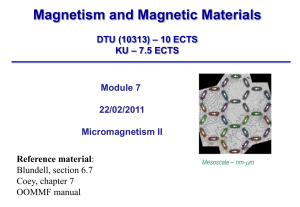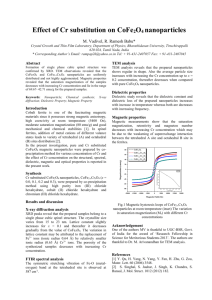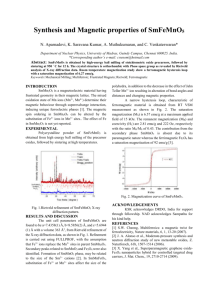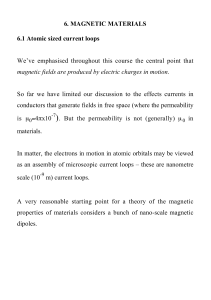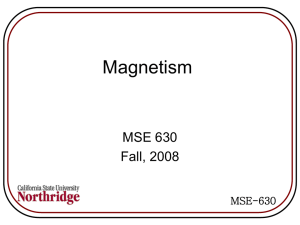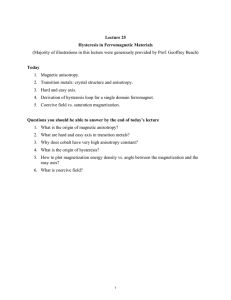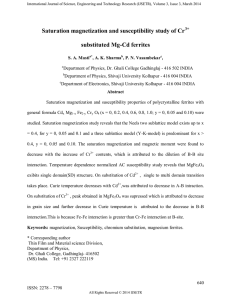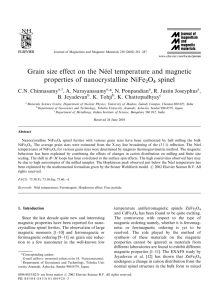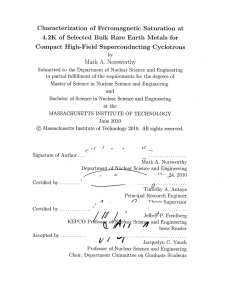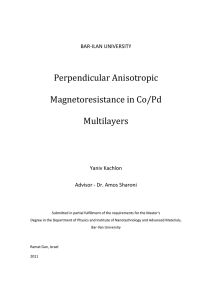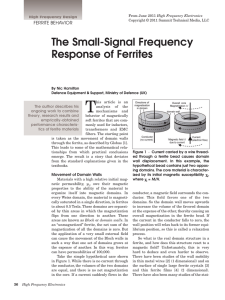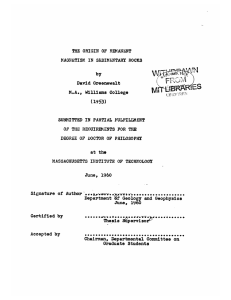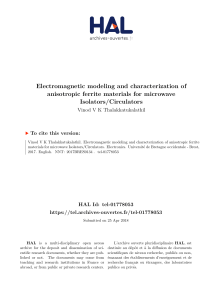Chapter 3 Problem
advertisement
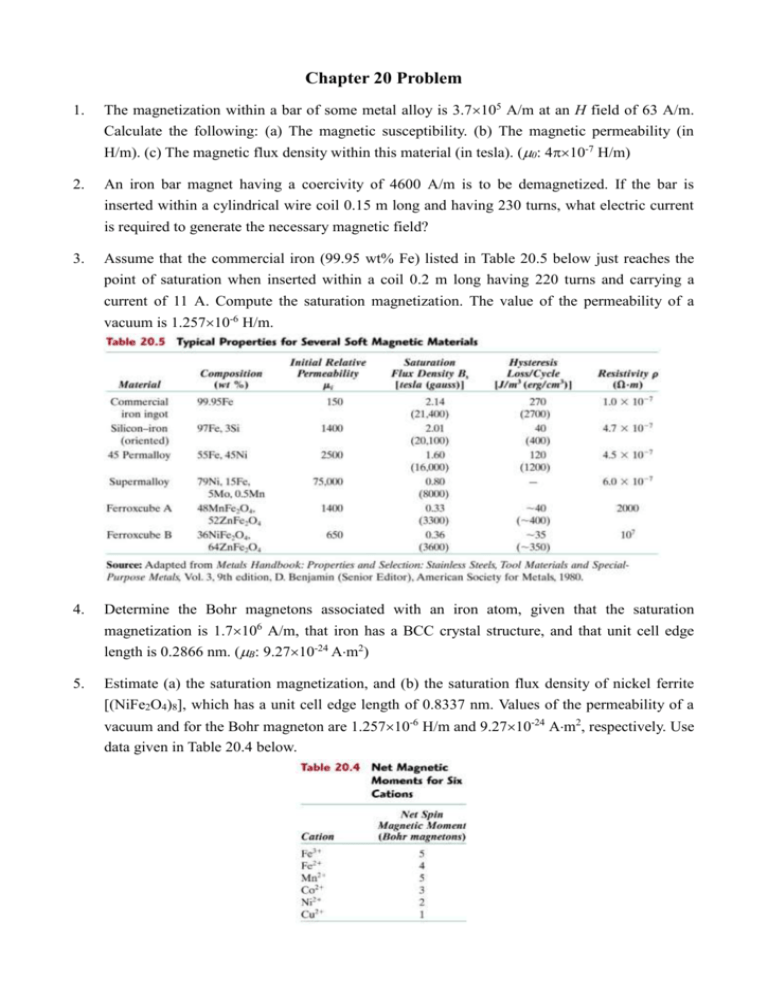
Chapter 20 Problem 1. The magnetization within a bar of some metal alloy is 3.7105 A/m at an H field of 63 A/m. Calculate the following: (a) The magnetic susceptibility. (b) The magnetic permeability (in H/m). (c) The magnetic flux density within this material (in tesla). (0: 410-7 H/m) 2. An iron bar magnet having a coercivity of 4600 A/m is to be demagnetized. If the bar is inserted within a cylindrical wire coil 0.15 m long and having 230 turns, what electric current is required to generate the necessary magnetic field? 3. Assume that the commercial iron (99.95 wt% Fe) listed in Table 20.5 below just reaches the point of saturation when inserted within a coil 0.2 m long having 220 turns and carrying a current of 11 A. Compute the saturation magnetization. The value of the permeability of a vacuum is 1.25710-6 H/m. 4. Determine the Bohr magnetons associated with an iron atom, given that the saturation magnetization is 1.7106 A/m, that iron has a BCC crystal structure, and that unit cell edge length is 0.2866 nm. (B: 9.2710-24 Am2) 5. Estimate (a) the saturation magnetization, and (b) the saturation flux density of nickel ferrite [(NiFe2O4)8], which has a unit cell edge length of 0.8337 nm. Values of the permeability of a vacuum and for the Bohr magneton are 1.25710-6 H/m and 9.2710-24 Am2, respectively. Use data given in Table 20.4 below. 6. The chemical formula for manganese ferrite may be written as (MnFe2O4)8 because there are eight formula units per unit cell. If this material has a saturation magnetization of 5.0105 A/m and a density of 5.19 g/cm3, estimate the number of Bohr magnetons associated with each Mn2+ ion. (B: 9.2710-24 Am2, AMn: 54.94 g/mol, AFe: 55.85 g/mol, AO: 16.00 g/mol, NA: 6.0221023) 7. A cobalt-nickel alloy is desired that has a saturation magnetization of 1.3106 A/m. Specify its composition in weight percent nickel. Cobalt has a HCP crystal structure with c/a ratio of 1.635, whereas the maximum solubility of Ni in Co at room temperature is approximately 35 wt%. Assume that the unit cell volume for this alloy is the same as for pure Co, and the radius of Co is 0.125 nm. For cobalt and nickel, the net magnetic moments per atom are 1.72 and 0.60 Bohr magnetons, respectively. The atomic radius of cobalt is 0.125 nm. (B: 9.2710-24 Am2, ACo: 58.93 g/mol, ANi: 58.69 g/mol) 8. Which of the following characteristics are displayed by soft magnetic materials? □ A relatively small hysteresis loop. □ A relatively large hysteresis loop. □ Magnetization and demagnetization may be achieved using relatively low applied fields. □ Magnetization and demagnetization require relatively high applied fields. 9. A bar of an iron-silicon alloy having B-H behaviors shown in Fig. 20.29 below is inserted within a coil of wire 0.2 m long and having 60 turns, through which passes a current of 0.1 A. (a) What is the B field within this bar? (b) At this magnetic field what is the permeability? 10. Which two of the following are ferromagnetic materials? □ Copper. □ Fe3O4. □ Titanium. □ Nickel. □ Aluminum. □ Iron (a ferrite). □ MnO. □ NiFe2O4. □ Aluminum oxide.




